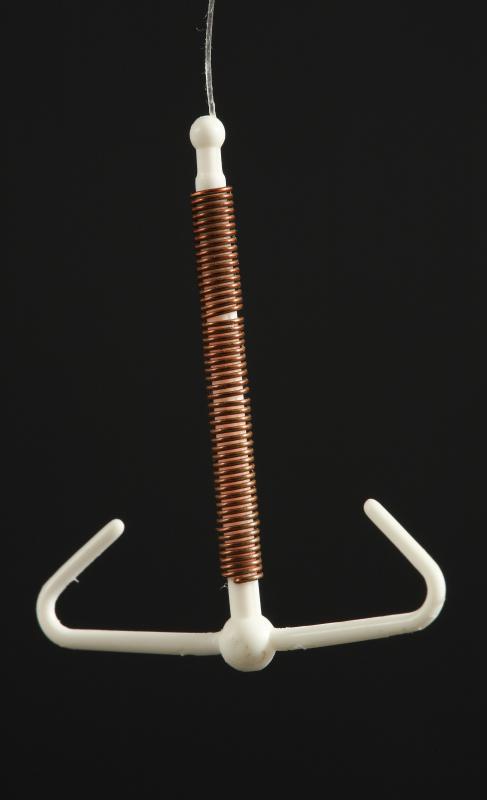At WiseGEEK, we're committed to delivering accurate, trustworthy information. Our expert-authored content is rigorously fact-checked and sourced from credible authorities. Discover how we uphold the highest standards in providing you with reliable knowledge.
What is an IUD?
An Intrauterine Device (IUD) is a reversible birth control method which is inserted directly into the uterus in order to prevent pregnancy. When used correctly, an IUD can be over 99% effective, and some types of IUD can continue to provide protection for five to seven years. Women seeking a highly effective non-hormonal method of birth control can use a copper IUD, while many health care providers also offer a plastic IUD which releases small amounts of the hormone progesterone over time.
The exact mechanism through which copper IUDs work is not fully understood. They appear to prevent either fertilization or implantation, and possibly both. With either type of IUD, the risk of pregnancy is greatly diminished, and the probability of successful implantation is very low, meaning that while eggs may be fertilized, they will not attach to the walls of the uterus and develop. An IUD is not protection against sexually transmitted infections, and may actually increase the risk of dangerous uterine infections if it is not monitored.

An IUD must be placed by a health care professional. Usually, an IUD placement session starts with a quick interview while doctor and patient decide whether or not an IUD is a good birth control method for the patient. Next, the doctor performs a pelvic exam and tests for infection and other abnormalities. If the patient is healthy, the t-shaped device can be inserted, sometimes with the aid of a local anesthetic to relax the cervix. A small string dangles down from the IUD so that the patient can check it regularly; if the string shortens or disappears, she should use a backup method of birth control and make an appointment to have her IUD checked.

Women who have a history of ectopic pregnancy, abnormal pap smears, pelvic inflammatory disease, toxic shock syndromes, certain cancers, HIV/AIDS, or copper allergies should not use an IUD. Other women of all ages should be able to safely use an IUD after a medical examination, and the device is effective immediately after insertion. In some cases, women have heavier periods after an IUD is inserted, while others stop bleeding altogether, a more common result of a hormone based IUD. In rare instances, an IUD may become embedded into the uterus, in which case it should be immediately removed to reduce the risk of pelvic pain and potential infection.
AS FEATURED ON:
AS FEATURED ON:













Discuss this Article
Post your comments